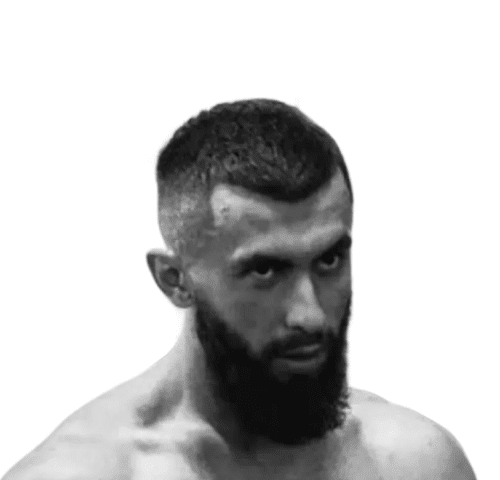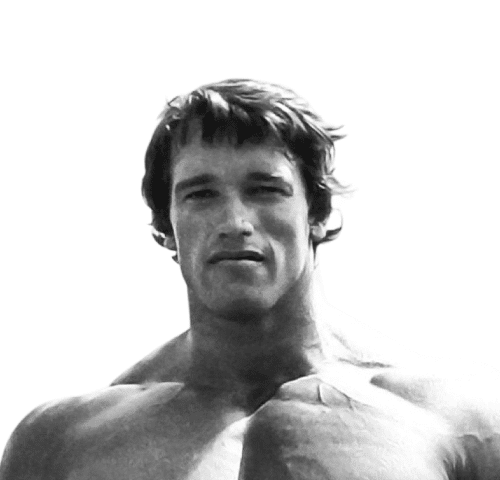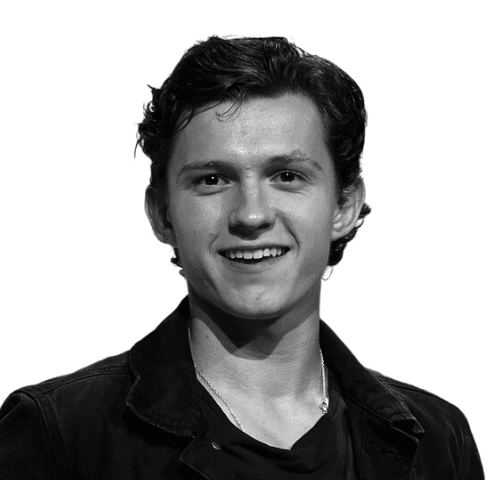Chris Evans Workout Routine in 2025 – Independent Breakdown of His Strength‑Focused Training

How He Built a Strong, Lean, and Superhero‑Ready Physique
Chris Evans is well known for the strong, athletic look he built for his roles, especially as Captain America. His training focuses on building muscle, staying lean, and keeping his body ready for demanding action scenes. The Chris Evans workout routine gives a simple breakdown of how he trains and what helps him maintain his physique.
- Last Updated: November 20, 2025
-
-
Monday – Leg Day
Starting the week with a lower-body session set the foundation for the Chris Evans workout routine. Even though leg day wasn’t something he naturally enjoyed, he stayed committed because it supported everything else he did in the gym.
- Back squats and lunges: These core movements helped him build strength in his quads, glutes, and hamstrings. Squats gave him the power needed for heavy training days, while lunges improved balance and single-leg control that carried over into his athletic work.
- Leg press for added volume: This machine allowed him to push more weight safely and fatigue the legs without stressing his lower back. He used it to increase the total workload of his session and build fuller muscle development in the lower body.
- Calf raises for support: Strengthening his calves helped improve ankle stability, which made a noticeable difference during explosive movements. This small but important exercise also helped prevent imbalances that could interfere with his squat depth or posture.
- Seated hamstring curls: This isolation movement targeted the back of his legs to balance out the heavy quad-focused lifts. Building stronger hamstrings supported safer squats and reduced the risk of pulling something during intense training periods.
- Explosive squat-to-box jumps: These jumps trained him to generate force quickly, which improved his overall athleticism. Adding power-based movements kept his legs strong, fast, and prepared for high-energy action scenes.
- Pushing through discomfort: Even though he often said he didn’t enjoy leg day, he stayed consistent because he knew skipping it would hold back his long-term results. Committing to the tougher parts of training helped build the physique he became known for.
Finishing this lower-body session early in the week gave him a solid physical base for everything that followed. Staying disciplined with the parts he disliked showed the importance of commitment in building a well-rounded exercise routine.
-
Tuesday – Back Day
This session focused on building a strong upper and lower back to support Chris Evans’ physique and on-screen performance for roles like Captain America, a key part of the Chris Evans Workout Routine. He used a mix of heavy lifts and controlled pulling movements to keep his back thick, wide, and balanced as outlined in the Chris Evans Workout Routine.
- Deadlifts for overall strength: These heavy pulls helped him build power through his lower back, glutes, and hamstrings. The movement also supported better posture and made his entire frame look stronger.
- Barbell rows for density: Used to load the upper and mid-back with enough weight to add thickness. This lift helped him develop the muscular detail needed for a broad and defined look.
- Lat pulldowns for width: Added to target the lats and create a wider shape through the sides of the back. He used steady, controlled reps to focus on engaging the muscles properly.
- Cable rows for balanced pulling strength: Allowed him to work the back at different angles and keep both sides evenly developed. The cable resistance made it easier to maintain constant tension through each rep.
- One arm dumbbell rows for range: This movement gave him the freedom to pull through a longer motion and hit deeper sections of the back. It also helped address side-to-side imbalances during heavy lifting.
- Wide grip pull ups, often weighted: Used to round out the session by building upper back width and improving strength through the arms and shoulders. Adding weight helped him continue progressing as he got stronger.
This back-focused routine played a big part in shaping his strong upper body and supported his training throughout the rest of the week. The mix of heavy lifts and controlled pulls helped him stay balanced and ready for more demanding sessions ahead.
-
Wednesday – Chest Day
Midweek training focused on building strength and shape through the chest while also keeping the shoulders and triceps active. The Chris Evans Workout Routine plan has a mix of pressing and flye movements to work the muscles from different angles and keep his upper body well balanced.
- Incline bench press: Done with either a barbell or dumbbells to target the upper chest and support a fuller, stronger look. The incline angle helped him build the upper portion of the pectorals, which added depth to his physique.
- Flat dumbbell bench presses: Used to hit the mid-chest with a wide range of motion and steady control. Dumbbells allowed each side to work independently, improving balance and overall strength.
- Cable flyes for controlled tension: Added to work the chest with constant resistance and improve definition. The cables gave him flexibility to adjust angles and keep pressure on the muscle through every rep.
- Incline dumbbell flyes: Focused on stretching and contracting the upper chest to round out the session. This movement helped isolate the area and supported better engagement during heavier lifts.
- Push ups and dips: Often done with added weight to finish the workout with a strong pump. These bodyweight movements helped his chest, shoulders, and triceps grow while improving overall stability.
This chest-focused workout routine helped him build strength across the entire upper body and supported the balanced look he aimed for on screen. The mix of presses, flyes, and bodyweight movements kept his sessions challenging and effective throughout filming prep.
-
Thursday – Arm Day
This training day was focused on building strong, full arms with exercises that challenged both the biceps and triceps. Chris Evans pushed through a mix of curls, extensions, and pulling movements to create noticeable size and strength.
- Preacher curls for controlled strength: Locking his arms in place forced the biceps to work without help from momentum. The slow, steady motion helped him add thickness through the center of the muscle and improved overall arm shape.
- Dumbbell bicep curls: Working each arm on its own helped correct small imbalances and gave him a better squeeze at the top of every rep. Adjusting his wrist position also allowed him to hit different parts of the biceps more effectively.
- Hammer curls for added thickness: The neutral grip targeted the brachialis and forearms, adding extra size along the outer part of his upper arms. This variation also let him handle more weight comfortably while keeping his form controlled.
- Skull crushers for triceps strength: Performing lying triceps extensions helped him build the long head of the triceps, which contributed to stronger pressing in other workouts. The controlled lowering phase added even more tension to the muscle.
- Overhead triceps extensions: Working the triceps from an overhead position placed the muscle under a deep stretch, activating fibers that don’t get much attention during other lifts. This longer range of motion helped improve overall arm fullness.
- Weighted chin ups: Adding weight turned this bodyweight staple into a demanding upper-body pull. The movement hit the biceps and upper back hard, giving him a strong finish to the session.
The combination of heavy curls, focused triceps work, and weighted pulling helped him build arms that were strong, rounded, and visually impressive. This training day in Chris Evans’ workout routine played a big role in shaping the upper-body strength he needed for his action-heavy roles.
-
Friday – Shoulders and Traps
The last session of the week in the Chris Evans exercise routine brought attention to the muscles that helped shape his strong upper-body frame. This day focused on developing shoulder strength, improving posture, and adding size through targeted lifts that challenged the delts and traps from several angles.
- Military dumbbell presses: This overhead movement helped him build power in the front and side delts while keeping the motion smooth and controlled. Working with dumbbells also encouraged both shoulders to contribute evenly, which supported better stability during heavier lifts throughout the week.
- Barbell strict press: A key exercise for overall shoulder strength that required full focus and control. Keeping his form tight ensured the delts handled most of the work, helping him develop the strength needed for demanding pressing movements in other sessions.
- Dumbbell front raises: These raises specifically targeted the front delts, helping create a stronger, more defined look through the upper chest and shoulders. The slow, steady lifting pattern made it easier to maintain tension and get the most out of each rep.
- Dumbbell or barbell shrugs: Used to build the traps and add fullness across the top of the back. Lifting heavy while keeping the movement short and controlled allowed him to feel consistent tension in the traps without straining his neck or shoulders.
- Shoulder width push ups: Sometimes done with extra weight to increase difficulty and engage the shoulders, chest, and stabilizers together. The tighter hand position kept the focus on the delts while giving his upper body a strong finishing challenge.
Closing the week with a session dedicated to shoulders and traps helped him stay balanced, strong, and ready for the next cycle of training. This focused routine added the final touches to his upper-body work and made each week feel complete.
Chest is exhausting. Triceps always hurt. But I love shoulder exercises.
-
Weekend – Recovery
After a demanding week packed with lifting sessions for every major muscle group, the weekend gave Chris Evans a chance to let his body settle down and recharge. These slower days in Chris Evans’ workout plan played a big role in helping him stay consistent, avoid burnout, and return to training each week feeling ready for heavier work.
- Saturday rest day: Most weekends started with a full day of rest so his muscles could repair from the week’s tough workouts. Taking a break helped reduce soreness, supported muscle growth, and made it easier for him to stay on track with his long-term training goals.
- Sunday light activity or extra training: Sundays were usually easygoing, with either another rest day or a light workout depending on how he felt. If a specific muscle group needed more attention and he wasn’t too tired, he sometimes trained it again to keep things balanced.
- Stretching and mobility work: Gentle stretching, yoga, or simple mobility routines helped improve his flexibility and loosen up tight areas from heavy lifting. These activities also supported better posture and made his movements feel smoother during the week.
- Active recovery options: Light movement, like a walk or a short mobility flow, helped increase blood flow without adding stress. This kept his body from feeling stiff and allowed him to recover faster after demanding sessions.
Slowing things down on the weekend gave him the time he needed to heal and prepare for another intense week in the gym. These recovery habits kept him consistent, healthy, and able to handle the physical demands of his training schedule.
-
Supplements
Preparing for intense training required more than just time in the gym. To handle long workouts, support recovery, and keep his body functioning well, Chris Evans followed a supplement plan that helped him stay consistent through demanding phases of physical preparation. This blend of protein, amino acids, and healthy fats also supported the results tied to a typical Chris Evans workout routine.
- Whey protein: Used multiple times a day, often after training sessions or as a quick snack. Each shake delivered about 30 grams of fast-digesting protein that helped repair muscles and supported his overall daily intake.
- Casein protein: Taken at night because it digests slowly and provides a steady stream of amino acids while he sleeps. This helped promote overnight recovery and reduced the chance of muscle loss between training days.
- Branched chain amino acids: He added around 5 grams of BCAAs to his shakes and meals to supply his muscles with the building blocks needed for repair. These amino acids were especially helpful during high-volume training periods.
- Glutamine supplementation: Used to support muscle recovery and immune health. This amino acid played a part in helping him stay consistent by reducing fatigue and supporting his body during stressful training phases.
- Omega 3 6 9 fatty acids: Taken with every meal to help with joint comfort, mobility, and inflammation control. These healthy fats supported his ability to handle workouts that demanded repetitive movement and heavy loads.
Staying committed to supplements like these helped him recover faster, maintain energy, and keep his joints feeling supported throughout the week. Paired with a steady eating schedule, this approach made it possible for him to handle the demanding training that shaped his on-screen physique.
-
Workout Diet
Building the strength and size needed for intense superhero roles required him to focus heavily on food, not just training. The Chris Evans workout and diet plan was built around steady meals, consistent protein intake, and enough calories to support long days in the gym without adding unwanted body fat. The goal was simple: fuel his muscles, keep his energy stable, and recover well after every session.
- Frequent meals throughout the day: He followed a 6 to 7 meal structure, eating every 2 to 3 hours to stay fueled. This helped him maintain steady energy and hit his target of around 2 grams of protein per kilogram of body weight each day, which for him meant over 160 grams of protein from whole foods and shakes.
- Breakfast choices: His mornings often started with porridge made with berries, walnuts, and sometimes Greek yogurt or protein powder. This combination offered a mix of complex carbs, healthy fats, and protein to prepare him for training.
- Mid-morning post-workout meal: After training, he typically had a whey protein shake paired with about 5 grams of BCAAs. Sometimes he added small snacks like an apple with almonds for extra energy. Around 20 minutes after the shake, he followed up with a solid meal to keep recovery moving.
- Lunch options: Lean proteins with complex carbs formed the base of his early afternoon meal. Grilled chicken salad with brown basmati rice was one of his regular plates, often combined with large servings of leafy vegetables and other nutrient-dense sides.
- Afternoon snack: Another protein shake was common, sometimes paired with nuts or fruit. He aimed to keep protein intake steady, often having a shake and almonds every few hours during heavy training blocks.
- Dinner habits: Evening meals were usually built around lean proteins such as fish, chicken, or steak, paired with vegetables. He often skipped starchy carbs at night and focused instead on steamed greens like broccoli and spinach to keep his intake high in nutrients but lower in calories.
- Before-bed nutrition: To support overnight recovery, he usually had a casein protein shake. Since casein digests slowly, it helped supply a steady stream of amino acids through the night and lowered the chance of muscle breakdown.
Throughout the day, he also relied on snacks like fruit or almonds and drank plenty of water to keep his body functioning well. His eating plan focused on clean, whole foods rather than junk calories, even during heavy bulking phases. Keeping his diet structured this way helped him add muscle while staying relatively lean and ready for demanding training sessions.
-
Exercise Plan
To handle the physical demands of his superhero roles, Chris Evans followed a workout plan built around strength, consistency, and smart progression. His routine balanced heavy lifting with bodyweight work, giving him both size and functional strength. Each session had a clear focus, and his training schedule allowed every muscle group enough time to recover while still being pushed hard during the week.
- Heavy weights with controlled reps: Many of his main lifts stayed in the low rep range, often around sets of 5 for movements like squats and deadlifts. This approach helped him build strength and muscle at the same time. He paired these with higher-rep bodyweight drills, such as pull-ups or dips, sometimes done for 3 sets of 12 or 3 sets of 15. Some bodyweight sets were performed with added weight to increase the challenge.
- Planned rest between sets: He took about 2 to 3 minutes of rest for heavy low-rep work and around 60 to 90 seconds for higher-rep sets. This mix allowed him to lift heavy without losing intensity throughout the workout.
- Focused muscle group days: Each day had its own muscle group, such as legs, chest, arms, or shoulders. This setup let him work each area intensely, then give those muscles several days to recover. It also supported high volume and heavy lifting without training the same muscles back-to-back.
- Added bodyweight movements: Evans used exercises like press-ups with a plate on his back, weighted pull-ups, and dips to failure. These movements supported strength and muscular endurance and added variety to his routine.
- High-intensity sessions pushed safely: Evans trained at a level that often left him exhausted and occasionally feeling nauseous, but his trainer, Simon Waterson, kept the balance between pushing hard and staying injury-free. The goal was to challenge him while keeping him healthy enough to train again the next day.
Evans stayed committed to this structure for months, combining heavy lifts, disciplined rest periods, and bodyweight challenges. This combination helped him get stronger, maintain full-body balance, and stay consistent through demanding training phases.
-
Chris Evans Workout Philosophy
To take on roles like Steve Rogers, Chris Evans followed a training mindset built around building strength, staying athletic, and pushing himself with consistency. His philosophy wasn’t just about lifting heavy but about using movements that worked his whole body, helped him stay fast on screen, and allowed him to add lean muscle in a balanced way. The goal was to feel strong, move well, and stay ready for demanding action scenes.
- Heavy compound lifts: Evans relied on big movements like squats, deadlifts, shoulder presses, incline bench presses, weighted dips, and chin-ups. These exercises worked several muscles at once and helped him add size and strength quickly across his entire body.
- High-weight, low-rep structure: Much of his routine followed lower rep ranges with heavier weight. This helped him build dense muscle while still maintaining solid strength for stunts and intense training sessions.
- Bodyweight training added in: Alongside the heavy lifting, Evans included bodyweight exercises to balance his fitness. Push-ups, dips, and chin-ups played a big part in keeping him strong through full ranges of motion.
- Plyometrics for athletic power: He also used explosive moves like squat-to-box jumps to fire up his fast-twitch muscle fibers. These movements supported agility and kept his heart rate high throughout the sessions.
- A blend of size and speed: His routine had a strong focus on hypertrophy, but it also kept him athletic for movie scenes that required quick, sharp movements. The mix of lifting, explosive work, and bodyweight exercises helped him reach that balance.
Evans stayed consistent with this approach, building muscle while staying light on his feet. This blend of strength work, explosive drills, and classic bodyweight exercises helped him look the part of Captain America while still performing at a high level during action-heavy filming.
-
Workout Balance
Chris Evans didn’t just train for size; he trained to build a strong, well-rounded body that could handle long days on set and the physical demands of playing a superhero. Balance played a huge part in his routine, helping him work every major muscle group without overloading one area or neglecting another. His trainer focused heavily on creating a structured plan that challenged both the front and back of the body, leading to symmetry, strength, and steady progress.
- Balanced training across muscle groups: Before preparing for Captain America, Evans mostly focused on chest, arms, and abs. His trainer shifted the approach to include back, legs, and core just as often. This created a stronger total-body foundation instead of relying only on upper-body aesthetics.
- Leg day taken seriously: Evans famously disliked leg training, but it was a non-negotiable part of his workout program. His trainer emphasized that the legs and glutes are the biggest and strongest muscles in the body, and pushing them hard would help him grow faster overall due to a strong growth-hormone response.
- Weekly structure for consistency: His typical schedule included five weight-training days and two days for rest or recovery. Each workout targeted one or two major muscle groups with high intensity, allowing Evans to hit every area of the body consistently throughout the week.
- Long, focused lifting sessions: Evans often trained for about two hours per session, working a pair of muscle groups until they were completely fatigued. After the main workout, he would finish with core circuits or ab-focused exercises as part of his cooldown.
- Varied grips and angles: To maximize muscle activation, he used different grips and angles within the same session. For example, chest days might include close-grip incline presses, incline flyes, and kneeling shoulder-press variations to add extra ab work.
Evans maintained this balanced structure to help his body stay strong, even, and capable of handling intense roles. With a mix of heavy lifting, thoughtful programming, and consistent recovery days, his routine supported both strength and symmetry throughout his training for Captain America.
-
High-Intensity Cardio Circuits
He kept his cardio simple and purposeful during the Chris Evans Captain America workout. Instead of long endurance sessions, he focused on short bursts of effort that supported muscle gain while still keeping him conditioned for action scenes. This approach helped him stay lean without burning the extra calories he needed for bulking.
- Limited traditional cardio: Evans stayed away from long runs, rowing sessions, or bike work because they would burn too many calories during his muscle-building phase. He openly shared that he avoided steady cardio since his main goal at the time was gaining size.
- High-intensity circuits as conditioning: Instead of steady-state work, he relied on fast-paced circuits that pushed his heart rate up quickly. These sessions allowed him to get all the cardio benefits without spending long periods on endurance machines.
- Sprint intervals for warm-ups: Evans often started training with about 10 to 15 minutes of interval-style sprint work. These short bursts helped him loosen up and prepared his body for heavy lifting without draining his energy.
- Minimal extra movement outside circuits: Beyond the interval warm-up, he skipped jogging, rowing, and stationary biking. His conditioning came directly from the intense lifting circuits he performed during workouts.
- Focused on maintaining size: Evans joked that too much cardio would make him “disappear,” which reflected how careful he was about keeping calories high enough to support muscle growth throughout the program.
Evans used these high-intensity circuits to stay sharp, keep his heart rate high, and support his overall training goals without slowing down his bulking phase. This simple approach gave him the conditioning he needed for superhero-level performance while still allowing steady muscle gain.
-
Gymnastics
To prepare for the athletic demands of playing Captain America, Chris Evans added movements that helped him stay light on his feet and strong through his entire body. These sessions were meant to support the fast-paced action scenes he performed on screen, giving him more agility, better coordination, and stronger core control.
- Agility and flexibility work: The gymnastics-inspired training helped Evans move with more speed and flexibility. These exercises challenged his mobility so he could handle quick changes in direction during his action scenes.
- Core strength development: Many of the movements focused on building a stronger midsection. This added stability made it easier for him to sprint, jump, and perform acrobatic-style actions during filming.
- Performance-focused mentality: Evans trained with the goal of performing well in scenes, not just looking muscular. Since the role required sprinting, throwing the shield, and jumping over obstacles, gymnastics work helped him meet those demands.
- Blending strength and conditioning: His routine mixed old-school heavy lifting for size with functional circuits and gymnastics-inspired drills for speed and mobility. This combination kept him both strong and quick throughout training.
Evans used these gymnastics-based exercises to stay fast, balanced, and ready for complex stunt work. Combined with intense circuits and traditional lifting, this approach helped him build a superhero-ready body that could handle the physical side of the role while still keeping him mobile on screen.
-
-
References
Chris Evans’ Captain America Workout & Diet Plan
CHRIS EVAN’S CAPTAIN AMERICA WORKOUT
Chris Evans Workout and Diet Plan [Updated]
Chris Evans Inspired Workout Program
Photo Credit: Chris Evans at the Red One premiere in 2024. Photo by Amy Martin Photography, licensed under Creative Commons Attribution-Share Alike 4.0.



